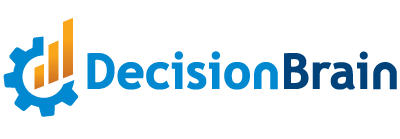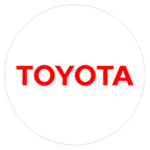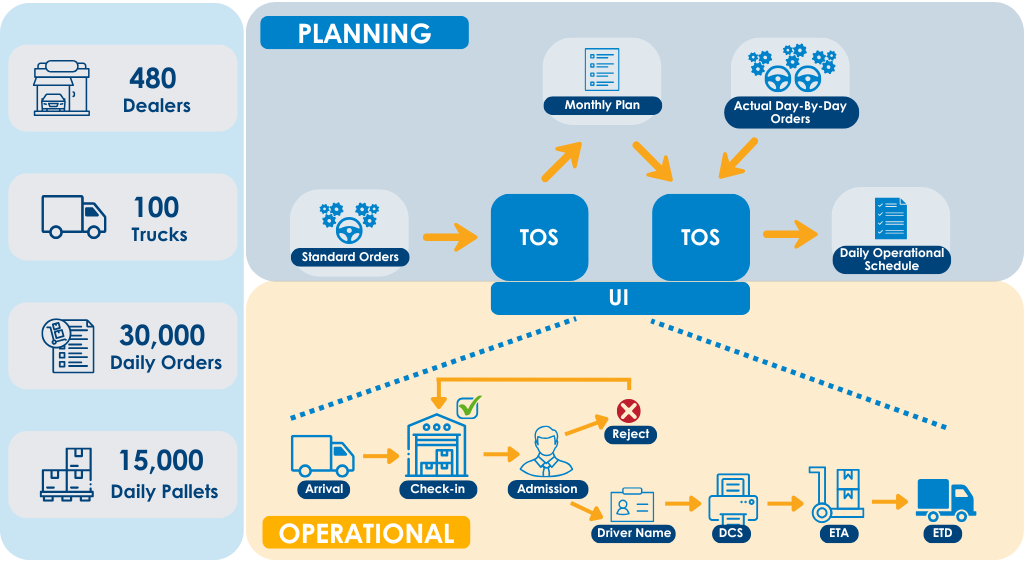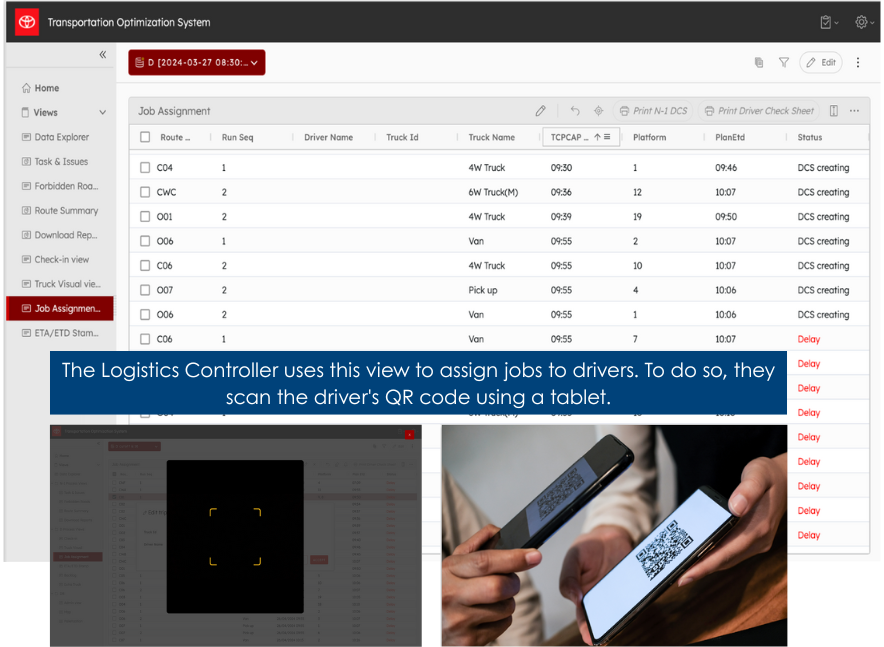Overview
Thailand is the second-largest manufacturing hub for Toyota globally, and it has traditionally been a place of innovation for supply chain and logistics, emphasizing minimal inventory, just-in-time deliveries, and continuous improvement.
In the country, Toyota manages a Part Center (TPCAP) responsible for delivering spare parts to its 480 dealers. The center operates with a fleet of 100 trucks, processing on a daily basis 30,000 orders and delivering 15,000 pallets. The complexity of the operations make it hard and time consuming to develop an efficient plan that dynamically adapts to the requests of the dealers.
To address this complexity, DecisionBrain developed a software solution based on mathematical optimization techniques, that automatically and dynamically defines the optimal delivery routes and trips, centralizing the operational flow, and significantly reducing computation time.
Challenges
Key Challenges to Achieve Efficiency in Spare Parts Delivery
In order to minimize costs while ensuring smooth operations the solution had to comply with several distinctive objectives:
- Ensure On-Time Deliveries: Workers at the dealers operate within strict time windows, which is a critical aspect to ensure repairs are completed promptly to satisfy end-customers. Timely delivery of spare parts is therefore a very important element of the operations.
- Manage Planning Complexity and Adapt in Real-Time: The planning process requires considerable time to develop and adjust manually, particularly when responding to real-time changes or unexpected disruptions.
- Maximize Fleet Utilization: Balancing the number of trucks required for daily deliveries while maintaining efficient routes is key to managing operational costs and resource allocation.
- Optimize Truck Loading: Streamline truck loading processes to maximize capacity and reduce handling time, ensuring smooth operations.
- Optimize Routes: Routes optimization would lead to reduced fuel consumption and CO2 emissions, helping to make deliveries more cost-effective and environmentally friendly.
- Reduce Inventory: Support Toyota’s lean production model by minimizing inventory at dealer locations without compromising the availability of parts.
Solution
DecisionBrain’s Transportation Optimization System (TOS)
To address these challenges, DecisionBrain implemented a comprehensive Transportation Optimization System (TOS) that improved and automated Toyota’s outbound logistics operations. This solution streamlined both the tactical and operational processes, making logistics more efficient and responsive to real-time needs.
Monthly Tactical Plan
This is a module for the computation of the monthly operations plan, designed to optimize Toyota’s logistics based on average daily orders. The plan is computed a few days before the start of each month and serves as the baseline for daily operations throughout the month. This plan considers typical demand patterns and provides a foundation that is adjusted throughout the month in real time.
Key aspects of the tactical plan include:
- Order Grouping: Parts are grouped into packages, which are then consolidated into pallets based on dealer locations, order cut off times, and other logistical factors.
- Routing and Sequencing: Routes are planned to minimize travel distances while ensuring on-time deliveries. The sequence of deliveries is optimized to reduce handling time and fuel consumption, ensuring efficient use of the fleet.
- Truck Assignment: Trucks are assigned to specific terminals based on the volume of orders and the delivery zones they cover, ensuring a smooth and efficient distribution process.
Daily Operational Schedule
This module is made of a dynamic, real-time solution that continuously adapts to evolving conditions throughout the day. Every morning the daily operational schedule is generated from the tactical plan and approximately every 15 minutes it is updated based on the actual orders received from the dealers. This approach ensures that Toyota’s logistics operations remain agile and responsive to real-time changes. The schedules are adjusted based on actual events, such as fluctuating demand, traffic conditions, and resource availability.
Key aspects of the daily scheduling include:
- Plan Adjustments: As new orders arrive, the system revises the schedules to absorb changes in demand. It allows the addition of trucks or trips throughout the day to respond to unplanned events, such as last-minute orders,and loading errors. If traffic conditions worsen the arrival times are also updated accordingly.
- Operational Interface Management: The whole operational flow at the warehouse is managed by the application through dedicated views and all the key users (drivers and controllers) can interact with it and register their actions.
Results
Operational Gains Achieved Through Toyota’s Logistics Optimization
The implementation of DecisionBrain’s Transportation Optimization System (TOS) has significantly improved the efficiency of Toyota’s outbound logistics operations. The key results include:
- Automated Updates and Real-Time Adjustments: The computation time for the monthly tactical plan, which previously took several hours, has been reduced to just 20 minutes. The real-time automated schedules, which update throughout the day, reduce the need for constant human interaction and manual adjustments. This automation ensures that when changes occur—such as new orders or traffic delays—the plan is quickly updated without disruption to operations.
- Centralized Operational Flow: The entire logistics process is now managed in one integrated system, making it easier for Toyota to oversee and adjust operations as needed. The application fulfills two primary roles: it acts as a planner by generating plans and schedules, and it functions as an interface by managing the real-time operational flow of the warehouse through specialized views.
- Optimized Routes and Trips: The system optimizes truck loading, routes and trips, reducing transportation costs, fuel consumption and improving overall delivery efficiency.
Want to learn more? See how Toyota reduced transportation costs by 10% and cut planning time from days to minutes.














